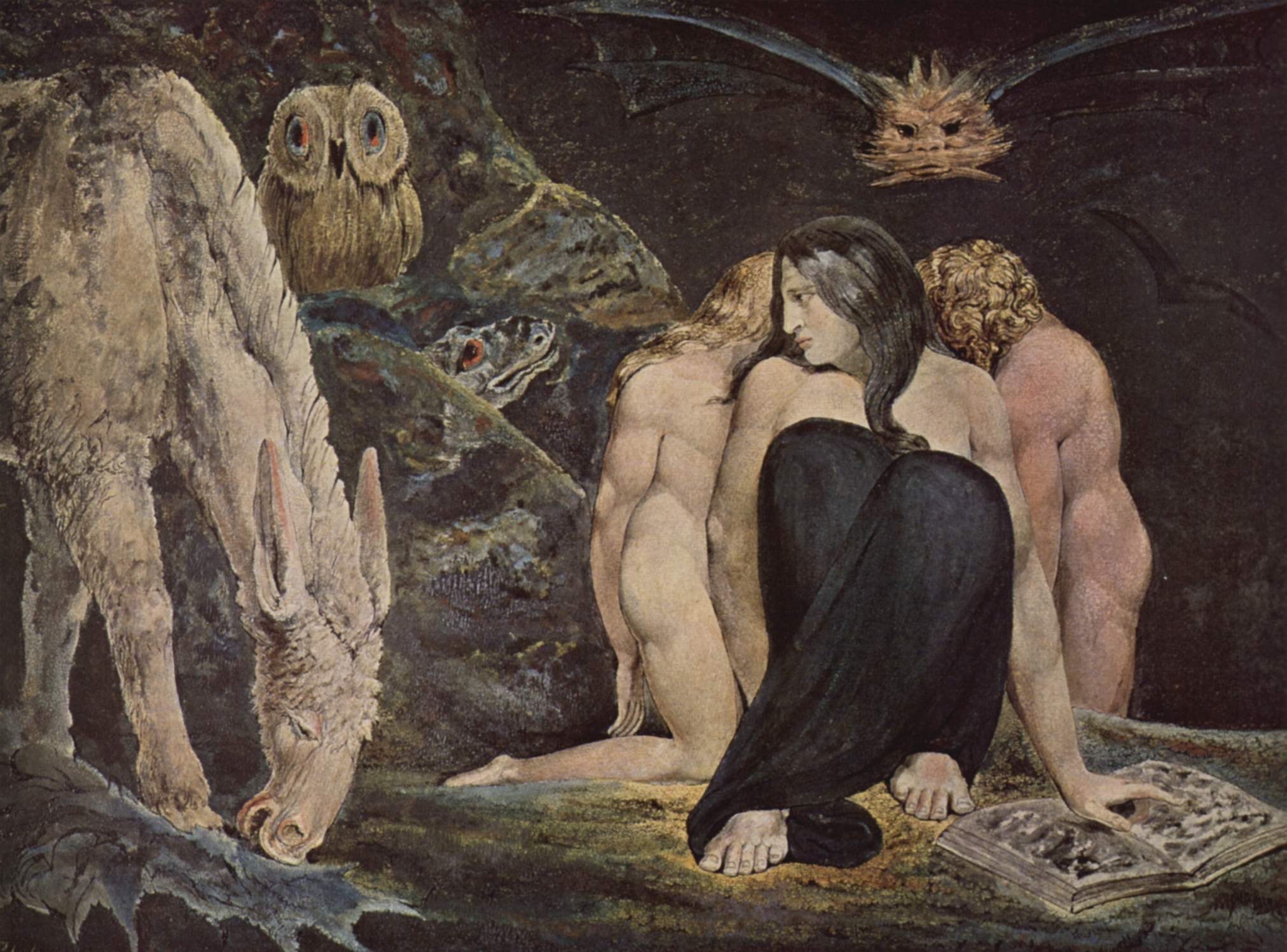"The scientific hypothesis of the archetype was proposed by Jung as an innate formal element that structures the psyche at its most basic levels. In itself psychoid and therefore anchored in reality beyond the psyche (in "spirit" or nous, the non-biological mind), the archetype is responsible for coordinating and organizing the psyche's homeostatic balance and its programs for development and maturation. Essentially there is one master archetype, the self, which defines the skeletal form of human wholeness. The archetype itself is not available directly to experience—only its images and created patterns can become manifest ..."
In 1946 W.P. Witcutt wrote a little book called Blake a psychological study, which makes this statement on Page 17:
The following two passages evoke the archetypes as Blake was aware of them. Although Blake did not use the word 'archetype' he understood the concept. In the first quote we read of the permanence of the images which are beyond time and space. The outward manifestations vanish from sight but the 'destind lineaments' which underlie them remain. Jung's archetypes are not lost either but surface in the human mind through dreams which bring forth unconscious content.
Milton, PLATE 22 [24], (E117)
"I am that Shadowy Prophet who Six Thousand Years ago
Fell from my station in the Eternal bosom. Six Thousand Years
Are finishd. I return! both Time & Space obey my will.
I in Six Thousand Years walk up and down: for not one Moment
Of Time is lost, nor one Event of Space unpermanent
But all remain: every fabric of Six Thousand Years
Remains permanent: tho' on the Earth where Satan
Fell, and was cut off all things vanish & are seen no more
They vanish not from me & mine, we guard them first & last
The generations of men run on in the tide of Time
But leave their destind lineaments permanent for ever & ever."
The second passage more dramatically presents Blake's understanding of the psychic patterns which exist outside of our conscious awareness and influence the way we perceive events in the outer world. How very like Jung's archetypes are the 'Sculptures of Los's Halls' whose 'combinations wrought with wondrous Art [portray] All that can happen to Man.' To complete the passage Blake adds the archetypal events of the Old and New Testaments which are repeated in humanity as each individual man travels his 'pilgrimage of seventy years.'
Jerusalem, Plate 16, (E 161)
"All things acted on Earth are seen in the bright Sculptures of
Los's Halls & every Age renews its powers from these Works
With every pathetic story possible to happen from Hate or
Wayward Love & every sorrow & distress is carved here
Every Affinity of Parents Marriages & Friendships are here
In all their various combinations wrought with wondrous Art
All that can happen to Man in his pilgrimage of seventy years
Such is the Divine Written Law of Horeb & Sinai:
And such the Holy Gospel of Mount Olivet & Calvary:"

No comments:
Post a Comment